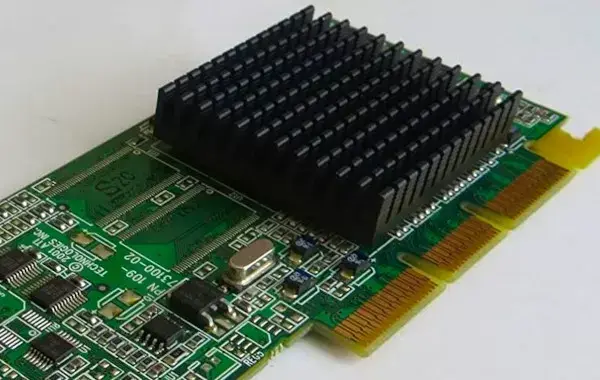Dropping support after only 25 years? I can’t believe Linux is contributing to planned obsolescence.
deleted by creator
ATI Rage 128, 3Dfx, S3 Savage, Intel 810, SiS, VIA and Matrox MGA DRM drivers
Those are some ancient cards! Can’t believe they’re supported this long.
I still have a Rage 128 hanging around as a ‘temporary head’ for installing headless servers. Many happy nights playing Thief: The Dark Project with it, and now it’s only good for rendering a TTY at a barely acceptable resolution. And soon, not even that. Goodbye, little e-waste :-(
Frame it and hang it on the wall.
Surround it with the box art of the games it powered so many years ago for extra nostalgia power
deleted by creator
What do you mean obsolete. I still use 'em.
Maybe you’re obsolete!
Damnit you may be right!
For all worrying about it I’d like to say, you can re-add driver code and compile your own kernel, and everything will be working fine, and last time I’ve read wiki there’s SLTC support for Linux 6.1 means your GPUs will be officially supported until 2033
AMD and nVidia on Windows: So your GPU is still very capable and useful for almost everything including most gaming tasks, but it’s a couple years old and not making us money any more? Sucks to be you, have fun hunting for unmaintained legacy drivers with likely security holes from questionable sources.
Linux: Your video card is from a long bygone era of computing, before the term “GPU” was a thing, and basically a museum piece by now? We’ll maintain a long-term support version for you for the next ten years.
True true)
Only 10 more years, it’s fucking ridiculous
Yeah Linux is great at supporting old hardware. I had an old desktop I built in 2009 lying around doing nothing. So I installed guix w/ a non-libre kernel onto it and brought it back to life!
Damn I’m old. I had at least two of those cards
I thought I was old, but I’ve only even heard of the 3dfx 😳
I must be ancient then. I recognized, and I think used, all of those cards/chips.
Some personally. Some at work. At work I used to maintain and MS-DOS / early Windows graphics program. I had to test the program’s compatibility with a stack of graphics cards.
I’m still angry at nvidia for buying their remains, and not doing anything useful with it.
3dfx had multi GPU support back then, it took quite a while afterwards until somebody else tried that.
I’ve been using (or, in some cases, trying to use) that when it was brand new. Kernel side was relatively easy - but there was a lot of compiling custom versions of XFree86 trying to get acceleration working properly.
On the one hand a bit sad to see that kind of history I’ve experienced myself go - on the other hand, it’s probably been a decade since I’ve last used something without KMS, and the ease of use of modern KMS drivers is way ahead of all the older stuff.
I’ve had a system in the late 90s with a 3dfx voodoo card. Also had a laptop with a SIS card from the early 2000 era.
The voodoo card was THE card to have it it’s day (mine was an older second hand system though). The SIS card… for some reason they decided that standard VESA mode probing wasn’t a thing they supported and would hardware crash when that API was used. I eventually got it working in Linux after patching xfree86 to not attempt probing when loading the VESA driver.
deleted by creator
I think I remember running into that as well but for whatever reason I couldn’t get accelerated-x working with the opengl libraries I was using for school. Likely the issue was just a lack of understanding on my part as I don’t think I had a good grasp of the Linux library loader until well after I graduated.
3DFX
There is a name I haven’t heard in a long time.
Oh no, the kernel will lose a whopping 200k SLOC!
Out of 27 million lines of code.
Which makes it 1% total. Which is a lot for one single change
Most of it in drivers.
You know, like the light novel with 12GB, 11.9GB of it in png.
SLOC?
source lines of code
deleted by creator
This is the best summary I could come up with:
The ATI Rage 128, 3Dfx, S3 Savage, Intel 810, SiS, VIA and Matrox MGA DRM drivers were what was phased out in Linux 6.3.
Thomas Zimmermann of SUSE is now aiming to take things one step further by removing the infrastructure for user-space mode-setting.
Zimmermann wrote on dri-devel: The old drivers for user-space mode setting have been removed in Linux v6.3.
The recent Linux v6.6 has been designated as long-term release, so any remaining users have a few more years to get a new graphics card.
These 14 patches get rid of another 8k lines of legacy code within the Direct Rendering Manager subsystem.
If no objections are raised, this legacy user-space mode-setting infrastructure removal could happen for the Linux 6.8 kernel cycle in the new year.
The original article contains 340 words, the summary contains 127 words. Saved 63%. I’m a bot and I’m open source!
So much for the legendary hardware support of Linux!
Edit: Forgot “/s”, but look at this lively discussion!
Lol you haven’t upgraded your GPU since the late 90’s?
deleted by creator












